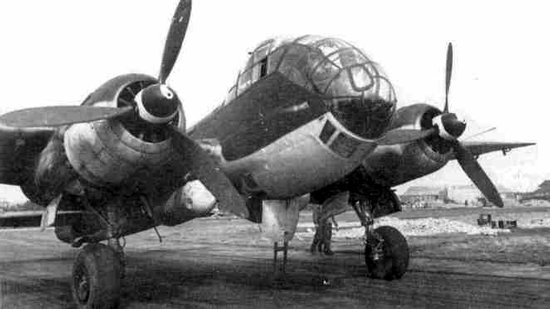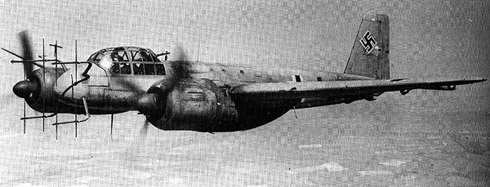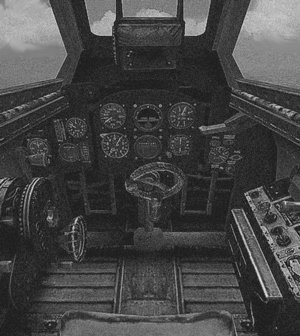The Ju 88 certainly was the most versatile aircraft of the Luftwaffe. Apart from the British Mosquito, no other airplane in history has been subject to so many versions and purposes. Though it made its maiden flight in 1936, it entered service in 1939, and it wasn’t shipped to the front lines before 1941. A total of 14,780 units were produced.
Designed as a high-speed horizontal and diving bomber, it also served as a long-ragne reconaissance aircraft, and some units were equipped for close air support with one 75-mm cannon, two 37-mm cannons or a flame-thrower! At the end of the war, some Ju 88 were even transformed in radio-controlled flying bombs.
Around the end of the war, it became mainly a night-fighter, with an on-board radar, capable of reaching 674 km/h.
Derived from the Ju 88, the Ju 188 was produced to the tune of 1076 units, and entered service in May 1943. The Ju 188 E2 was the most common, and was used as an anti-vessel aircraft armed with two 1500-lb torpedos and a surveillance radar.
| Type: | High-speed bomber, night fighter, ground attack aircraft |
| Crew: | 3 |
| Engine: | Two liquid cooled, 12 cylinder inverted-Vee, Junkers Jumo 211J-1 (or J-2) of 1,340 hp each. |
| Max speed: | 303 mph (488 kph) at 19,685 ft (6,000 m) |
| Ceiling: | 29,000 ft (8,840 m) |
| Range: | 1 000km (620 miles) |
| Weight (empty): | 20,020 lb (9,081 kg); |
| Weight (loaded): | 32,385 lb (14,690 kg) |
| Wingspan: | 65 ft 7.5 in (20.0 m) |
| Length: | 47 ft 8.5 in (14.54 m) |
| Height: | 15 ft 11 in (4.85 m) |
| Armament: | Three fixed forward-firing 20mm MG FF/M cannon and three fixed forward-firing 7.9mm MG 17 machine guns in lower nose section, one flexible 13 mm MG 131 machine-gun at rear of cockpit. Optional ‘Schräge Musik’ installation in upper fuselage with two 20 mm MG 151 cannon firing obliquely forward and 3000 kg (6,600 lb) of bombs |
A Ju 88 equipped with radar for night interception.
Ju-88 cockpit



